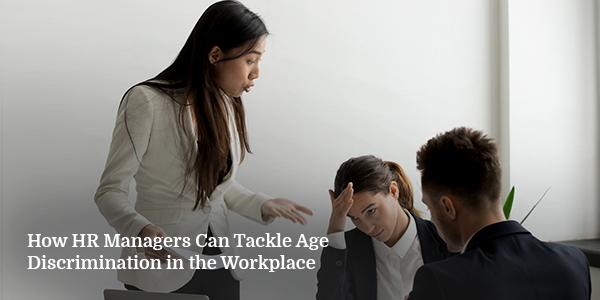
Age can be both a blessing and a burden for employees. On the one hand, it comes with experience; on the other, they claim old dogs can’t learn new tricks.
According to a study, 56% of employees aged 50 and up experienced involuntary job separation, with some pointing to their age as the primary reason for the management’s decision. Recent trends also show that candidates over 45 years old are more likely to be declined for a position than applicants in their 20s. This prejudice is called age discrimination, and there are laws to protect workers from discrimination in the workplace, such as the Republic Act No. 10911.
Age discrimination occurs when employees are treated differently in terms of hiring, promotion, and work assignments. While it takes many forms, its most common examples are when learning opportunities are given to younger employees and being left out of company activities due to age.
The lack of opportunities for and exclusion of older workers from company activities can lead to undersocialization, isolation, and disrespect. But this isn’t limited to old employees—the younger ones can also experience discrimination from the senior workers, such as questioning their capabilities due to young age and handing over less desirable tasks to them.
Ultimately, age discrimination compromises productivity in the workplace and can lead to adverse effects such as low morale and resignation.
How HR Managers Can Tackle Age Discrimination in the Workplace
Promote an inclusive culture within your company. Prevent workplace ageism with these actionable tips.
- Start from the hiring process
Tackle the problem of ageism as early as recruitment. Instead of identifying your ideal employee, use words that consider their work ethic and passion.
Don’t imply that candidates must be young to perform their duties successfully, so do not put discriminatory phrases such as “fresh-minded,” “new grads,” and “tech-savvy” in your job description. Instead, have statements that say your organization will not discriminate against candidates based on their age, race, sexual orientation, or gender identity.
Your company should also post job ads in different places, such as newspapers and online job boards. Similarly, during interviews, make sure you ask appropriate questions and steer clear of unnecessary, age-related conversations. Applicants must be assessed and picked according to their qualifications rather than assumptions.
- Don’t reward based on tenure
To avoid the loss of a seasoned employee, a common practice in most workplaces is promoting the most senior regardless of their merit. However, this could severely affect the morale of younger and more deserving employees who were passed off a promotion.
Your organization must value its employees’ commitment to growth and hard work. Your leaders can achieve this by giving out well-earned promotions to the best and the brightest, regardless of age. This, in turn, will help foster healthy competition in the workplace, which can drive growth and innovation.
- Have a mentorship program
Research has proven that mentorship programs increase job satisfaction, fulfillment, career advancement, and commitment. Additionally, it can bridge age-related tensions and connect age groups by bringing valuable experience and knowledge from older employees. It recognizes the employees’ expertise and shares it with the rest of the workforce.
Likewise, reverse mentoring programs can close the age gap and promote empathetic perspectives. Under reverse mentoring, a younger worker assists their mentor in leveraging unfamiliar technologies, social networks, and other applications.
- Have clear policies
Make it clear in your company policy that age discrimination will not be tolerated. Define what constitutes an offense and the repercussion to those who will be guilty of it.
Emphasize your criteria to all your employees during onboarding and company training. This will help your employees recognize how age discrimination manifests in the workplace and give ideas on how best to avoid them.
- Be aware of stereotyping and avoid it
No workplace is perfect and immune to age discrimination. The human psychological pattern relies on recognized and deeply-rooted stereotypes for decision-making and stereotyping.
Older professionals can be presumed as employees who resist change, mark their time to retirement, coast without ambition, or have lower energies. In reality, their experience is crucial in the success of many industries.
Recognize that these assumptions are a sign of ageism. Instead of excluding them from crucial activities in the workplace, you should include them in every way so that their experience can come into play and benefit your company.
- Invest in employee development
Regardless of age or position, your company should provide development and training opportunities to all your employees. Helping your older employees stay updated with the trends and best practices enables them to achieve more. Encourage them to join these training programs by offering incentives.
- Conduct a diversity training session
With most workforces comprised of baby boomers, millennials, and Gen X-ers, incorporating diversity, inclusion, sensitivity, and age discrimination in the workplace in your training sessions can help them work symbiotically.
It opens the doors to better socialization and promotes team building. Specifically, covering unconscious stereotypes and providing real-world examples can increase engagement among trainees—when employees undergo diversity training, formal complaints against age discrimination rise from 40% to approximately 65%.
Training is indeed an essential aspect of the onboarding process. It is an excellent opportunity to understand the repercussions of discrimination and the benefits of age diversity in work.
A Workplace for All Ages
A multigenerational workforce is ethically and legally compliant. The best way to promote age inclusivity in your workforce is by having clear policies and criteria for hiring and rewarding. Communicating the importance of respect and discrimination’s negative consequences can also prevent ageism.
Proactively recognizing every employee’s significant and irreplaceable role regardless of age can improve relationships, collaboration, and growth.
A reliable recruitment agency in the Philippines might be able to help you drive your business forward and significantly increase its productivity while you establish inclusivity. Manila Recruitment offers top-notch HR and people management services. Contact Manila Recruitment to learn how we can help you!













